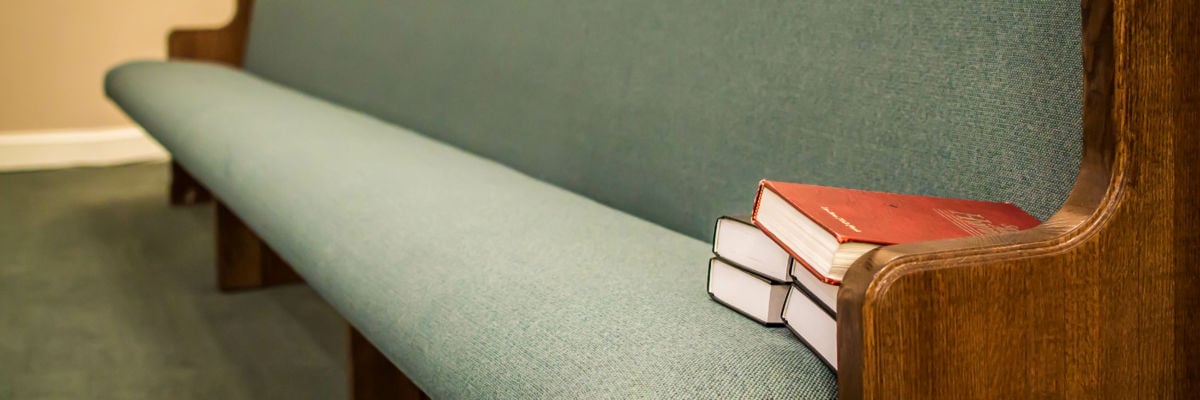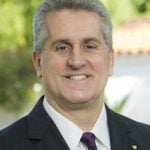
In talks about the liturgy, you may find complaints that the doxology—“for thine is the kingdom, the power, and the glory forever”—was added to the Our Father in the Mass at the time of the Second Vatican Council because Pope St. Paul VI wanted to appease Protestants and make the Mass more Protestant-friendly. What should we make of this claim?
When speaking of the goals the Council had in mind concerning the reform of the Liturgy, in the first section of the Constitution on the Sacred Liturgy from Vatican II, Sacrosanctum Concilium (SC), the Church declared:
This sacred council has several aims in view: it desires to impart an ever-increasing vigor to the Christian life of the faithful; to adapt more suitably to the needs of our own times those institutions which are subject to change; to foster whatever can promote union among all who believe in Christ; to strengthen whatever can help to call the whole of mankind into the household of the Church.
Thus, if by appease, one means did the Church consider promoting unity with the Orthodox, Protestants, and indeed “all who believe in Christ” in establishing the reform, then the answer is yes.
We have to keep in mind that this is only one of many aims of the Church. Those manifold reasons go beyond what I can speak of in this brief article. But I would be remiss if I did not mention the first reasons for the existence of the liturgy, as SC says so beautifully. In essence, the liturgy is all about Jesus offering the perfect sacrifice for our redemption and for God’s glory:
Therefore, in Christ “the perfect achievement of our reconciliation came forth, and the fullness of divine worship was given to us.” The wonderful works of God among the people of the Old Testament were but a prelude to the work of Christ the Lord in redeeming mankind and giving perfect glory to God (5). . . . To accomplish so great a work, Christ is always present in His Church, especially in her liturgical celebrations (7).
Unfortunately, many believe that the doxology came from the Protestants because so many think it’s a biblical reference. It is included in Matt. 6:13, at the end of the Our Father, in the King James Bible, for example. Yet, the truth is, the doxology is not found in the most ancient and best manuscripts of the New Testament from the first, at least, six hundred years of the Christian era. There can be little doubt that it was not original to the Gospels. However, it is found in later Greek manuscripts as a copyist’s gloss introduced into the text.
A deeper look at the doxology itself reveals much deeper reasons for its inclusion in the liturgy than just fostering union among believers in Christ. The doxology represents a rich and ancient tradition in the Church. Indeed, we find it in various forms to have been prayed after the Our Father in Catholic liturgies over fourteen hundred years before Protestantism existed, especially in the Eastern Catholic churches. For example, in the Didache, which scholars today believe may have been written around A.D. 75, you have this, in Chapter 8 of what is tantamount to the first Christian catechism:
But let not your fasts be with the hypocrites (Matthew 6:16), for they fast on the second and fifth day of the week; but fast on the fourth day and the Preparation (Friday). Neither pray as the hypocrites; but as the Lord commanded in his gospel, thus pray: Our Father who art in heaven, hallowed be your name. Your kingdom come. Your will be done, as in heaven, so on earth. Give us today our daily (needful) bread, and forgive us our debt as we also forgive our debtors. And bring us not into temptation, but deliver us from the evil one (or, evil); for yours is the power and the glory forever. Thrice in the day thus pray.
In similar forms, the doxology is found in almost all of the ancient liturgies—for example, the liturgies of St. James and St. Mark, which all acknowledge to stretch back to the fourth century at the latest, and most likely earlier. And you have the Anaphora of Ss. Mari and Adai, which is generally attributed to the third century, but it too is most likely older than that. In the Byzantine liturgy, the priest sings the doxology after the Our Father.
You also have a version of the doxology in the fourth-century Apostolic Constitutions, which is a collection of Church teachings referring to theology (faith and morals), liturgy, and Church practice and understanding in general. It was an influential document in the Patristic age and beyond.
The fathers of Vatican II—and the post-conciliar fathers who continued the reform—made clear that the doxology is not original to the Gospel by separating it from the Our Father via a prayer of the presider. Then the congregation joins with the presider in praying the doxology as a powerful and ancient conclusion to the Our Father.
Some will accuse the Church of a kind of archaeologism, which Pope Pius XII rejected in his great encyclical letter Mediator Dei:
The same reasoning holds in the case of some persons who are bent on the restoration of all the ancient rites and ceremonies indiscriminately. The liturgy of the early ages is most certainly worthy of all veneration. But ancient usage must not be esteemed more suitable and proper, either in its own right or in its significance for later times and new situations, on the simple ground that it carries the savor and aroma of antiquity (61).
The Church did not add the doxology simply because it is old. Thus, there is no archaeologism here. The Church included it in the reform because it is true, good, and beautiful. If it contributes to unity among Christians, all the better. Nor is it being re-introduced to the Church—rather, just to the liturgy of the Roman rite. The Catechism of the Catholic Church has a great couple of sections on this that sum it up.
The final doxology, “For the kingdom, the power and the glory are yours, now and forever,” takes up again, by inclusion, the first three petitions to our Father: the glorification of his name, the coming of his reign, and the power of his saving will. But these prayers are now proclaimed as adoration and thanksgiving, as in the liturgy of heaven. The ruler of this world has mendaciously attributed to himself the three titles of kingship, power, and glory. Christ, the Lord, restores them to his Father and our Father, until he hands over the kingdom to him when the mystery of salvation will be brought to its completion and God will be all in all.
“Then, after the prayer is over you say ‘Amen,’ which means ‘So be it,’ thus ratifying with our ‘Amen’ what is contained in the prayer that God has taught us” (2855-56).
Archaeologism? Absolutely not! The doxology represents a continuity of prayer among both religious and laity in the Church that truly spans the centuries to our present time. It is a most profound example of the end of all prayer in our Catholic tradition. In the words of St. Augustine: “O beauty, ever ancient and ever new!”



